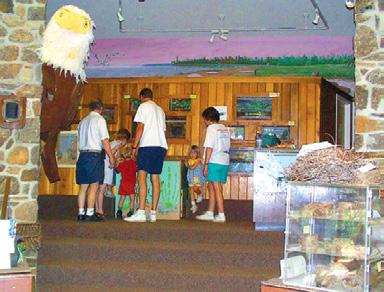
6 minute read
WELL-BEING IN
Well-Being in Eight Seconds Hone Your Emotional Intelligence
Sitting in my doctors’ office, I had no idea both of us were about to have a most pivotal moment. She put my face in her hands and said, “You just look so pathetic.” I had lost so much weight that I was practically a walking bone. It was so very frustrating that no matter how much I ate, I couldn’t seem to gain weight. What brought me to this point was stress—from work and from life. I had made it through two separate biopsies for breast cancer (both of which, thankfully, had come back negative), graduated with honors from a Master’s level program at the University of Pennsylvania and excelled professionally, only to be left with so much stress that it was beginning to take a toll on me physically. And though I knew my body well enough to know that the weight loss was due to stress, I was beginning to get nervous because no matter how much I ate, I wouldn’t gain. After much testing, it was determined that I was, to quote my doctor, “healthy as a horse.” She told me to eat cupcakes for breakfast, pies for lunch and cake for dinner—whatever it took to gain weight. I reminded her I thought my weight loss was
Advertisement
by Paige Dest
due to stress. I also told her all I knew about a set of skills known as “emotional intelligence” (EI), and that I really believed this would make a difference in my overall wellbeing—physically, mentally and spiritually. Three months later, I sat—at a healthy weight range—waiting for her to enter the examination room. “Wow,” she exclaimed, “I thought we were going to lose you three months ago, and now, you’re a healthy and balanced woman. You’ve opened me up to the difference emotional intelligence can make for someone.” I had been convinced by my personal growth through EI coaching and by seeing the amazing positive results in my total well-being; and she had been convinced, too.
Emotions affect every element of our being. So it stands to reason that learning skills that help us use emotions as information, guiding our thoughts and behavior, can truly impact each of those elements and change our lives. Most of us have heard of EI (sometimes called “emotional quotient” or EQ), and many of us may have a deep understanding of it, but practicing EI skills is a daily commitment. It’s a process of accepting your emotions for what they truly are— chemicals in the brain and body that create synapses moving through the instinctual brain into the limbic system, enticing the amygdala and ultimately influencing our thoughts and behaviors. In the simplest sense, they are information. In fact, these chemicals only last about four to seven seconds. But the emotion affects your physiology and thoughts and vice versa, creating a feedback loop leading to “emotional hijack”, which can last a lot longer than that! You know the feeling—when you can’t seem to get past a particular emotion, driving thoughts and behaviors you may regret later. Within that small window of time, less than eight seconds, you can stop the potential for hijack and choose better thoughts and actions. The first step is breathing deeply and slowly a few times, through your nose. This will slow down your body’s reaction to the emotion, slowing your heart rate, increasing your blood flow and allowing more blood to the cognitive part of your brain, permitting it work more efficiently. The next step is to name your emotion and
focus on what it may be telling you. Why are you really feeling this emotion? It’s not based on the actions of another, though that may be its trigger. The emotion itself is telling you something about how you perceive your environment. Being aware of the specific emotion gives you more control over it and begins to put your cognitive brain to use. Even if you start by naming a general emotion (such as mad, sad, glad, scared or disgusted), you will begin to feel more control over the emotion. And reflecting on the information it gives you (why you are feeling that particular emotion) can help you determine the best next step: the step of choosing who and how you will be—choosing your thoughts and actions. It may sound simple, but try it when you’re in the heat of an intense emotional moment, and it can seem impossible. Luckily, you know better—it IS possible, and it takes less than eight seconds. Practice sitting with a heightened emotion and then try to bring the emotion down, by breathing, naming the emotion and listening to what the feeling is really telling you. If you practice this daily in a safe, quiet space, you’ll begin to realize that when that moment of hijack comes, you’re ready to take charge of your emotions and make a better choice based on this information. You’ll find that the emotion dissipates more quickly; and the more you do it, the easier it will become. You may still experience hijack; after all, it’s a chemical reaction. But you have the power to slow down and even stop the hijack. Practice each day and before you know it, you will have increased your wellbeing—and it took less than eight seconds!
Paige Dest is a certified emotional intelligence coach and Core Values Index practitioner and the owner of BYODestiny—through which she provides emotional intelligence coaching to individuals and presents retreats, workshops and national webinars on emotional intelligence and happiness topics. She is also the founder of The Flutter Foundation, Inc., a nonprofit that supports programs which give our youth better emotional control. Connect at Paige@BYODestiny.com.
Help Children Learn Emotional Intelligence Skills
n To celebrate World Children’s Day on November 20, UNICEF and allies in 150+ countries are collaborating to bring more emotional intelligence awareness and resources to children and the adults who support them.
n How can you take part? Sign up to host a POP-UP festival, a free wellbeing festival and a hands-on learning experience that you create by printing activity “stations,” gathering simple materials, and inviting people to come together to learn and play. Each host decides which “stations” to print, and they decide how big of a festival to hold: It can be a few people around a kitchen table or a few hundred in a park.
n Those interested sign up and receive a free kit with resources, games and decorations for the event. It’s not a “presentation” or a “workshop” — the stations are self-guided, designed for children (who can read) or adults and children together, or just adults, to explore, talk, play and learn by doing. Organizers will be hosting optional “host trainings” online to answer questions and give support before the festival.
n You can host a festival anytime during the month of November. The POP-UP Festival supports the UN’s Sustainable Development Goals (SDGs), which aim to help children grow the skills for a better life and a better world: Grow friendship, reduce conflict. Grow self-awareness, reduce volatility. Grow connections, reduce isolation.
To learn more, or to sign up to host your own POP-UP Festival, visit 6seconds.org/popup/.
ANSONIA NATURE CENTER
104 acres of wooded hills and grassy fields, miles of nature trails, streams, a two-acre pond, wet meadows, upland swamp, butterfly & hummingbird garden, woodland wildflower and fern garden, community gardening, childrens’ playscape, visitor center, animals & nature exhibits, classes and more!
(203) 736-1053
AnsoniaNatureCenter.org










